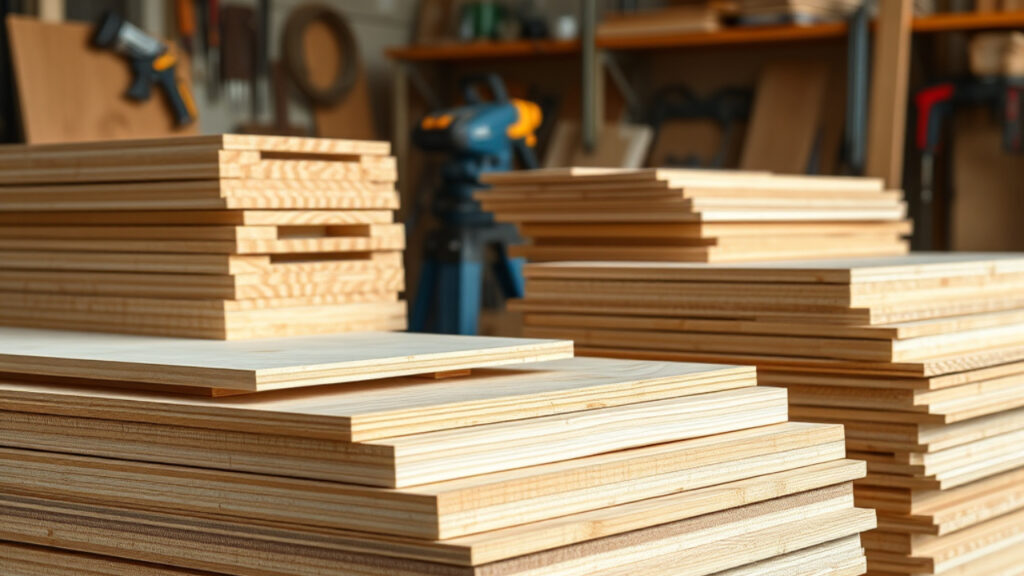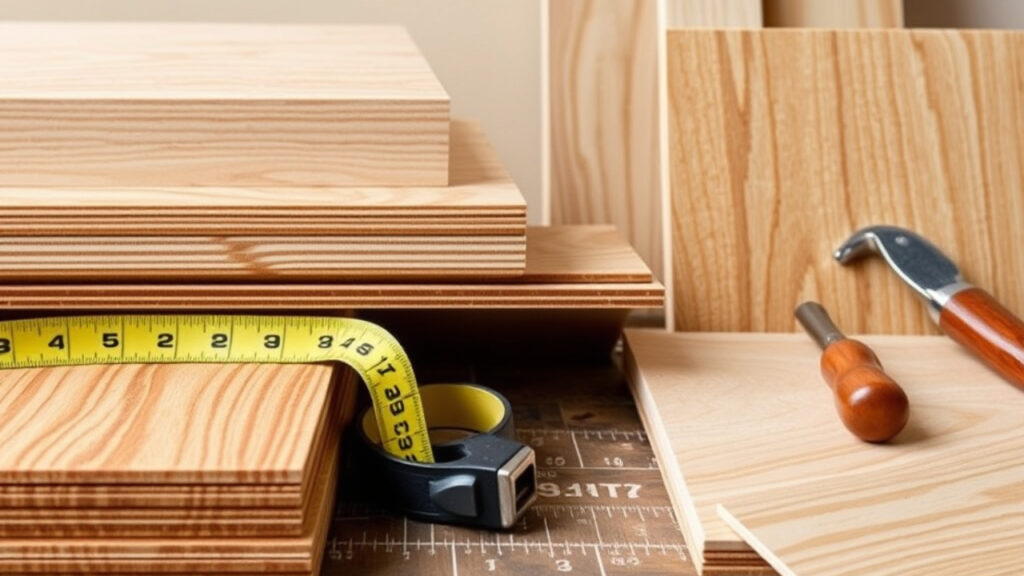Fire-Retardant Plywood: The Ultimate Guide to Uses, Benefits, and Buying Tips
Table of Contents
- Introduction to Fire-Retardant Plywood
- What is Fire-Retardant Plywood?
- How is Fire-Retardant Plywood Made?
- Types of Fire-Retardant Plywood
- Key Features of High-Quality Fire-Resistant Plywood
- Fire-Retardant Plywood vs. Regular Plywood: Key Differences
- Top Uses of Fire-Retardant Plywood
- Commercial Buildings & High-Rise Structures
- Residential Homes & Safety-First Interiors
- Public Spaces & Emergency Exits
- Industrial Warehouses & Storage Units
- Transportation & Vehicle Interiors
- Advantages of Using Fire-Retardant Plywood
- Trending Fire-Retardant Plywood Uses in 2025
- How to Choose the Best Fire-Retardant Plywood
- Best Fire-Retardant Plywood Brands in the Market
- Maintenance & Safety Tips for Fire-Resistant Plywood
- Is Fire-Retardant Plywood Completely Fireproof? What You Need to Know
- Eco-Friendly and Sustainable Fire-Retardant Plywood Options
- Frequently Asked Questions (FAQs)
- Conclusion
1. Introduction to Fire-Retardant Plywood
Fire-retardant plywood is a specially treated plywood that offers enhanced resistance to fire, helping to slow down the spread of flames in case of a fire hazard. It is widely used in commercial, industrial, and residential buildings where fire safety is a top priority.
With increasing safety regulations and a focus on fire-resistant materials in construction, fire-retardant plywood has become a crucial choice for architects, builders, and interior designers. In this guide, we will cover everything you need to know about fire-retardant plywood, from its features and benefits to its top trending applications.
2. What is Fire-Retardant Plywood?
Fire-retardant plywood (FR plywood) is a type of engineered wood treated with chemical solutions to slow down combustion and prevent fire spread. It is manufactured to meet strict fire safety standards, making it ideal for fire-prone areas and high-risk environments.
Key Characteristics of Fire-Retardant Plywood:
✔ Chemically treated to slow fire spread
✔ Reduced smoke emission during combustion
✔ High structural integrity even under high temperatures
✔ Available in different fire-resistance ratings
3. How is Fire-Retardant Plywood Made?
The manufacturing of fire-retardant plywood follows these steps:
- Log Selection & Veneer Preparation: High-quality wood veneers are selected for processing.
- Chemical Treatment: The veneers are treated with fire-retardant chemicals through vacuum pressure impregnation.
- Layer Arrangement & Adhesion: The treated veneers are stacked and bonded using fire-resistant adhesives.
- Hot Pressing: The sheets are compressed under high heat and pressure to form strong, durable plywood.
- Fire Testing & Certification: The final sheets undergo fire-resistance tests to ensure compliance with safety standards.
4. Types of Fire-Retardant Plywood
1. Interior Grade Fire-Retardant Plywood
🔹 Designed for indoor use in walls, ceilings, and furniture.
🔹 Offers moderate fire resistance for homes and offices.
2. Exterior Grade Fire-Retardant Plywood
🔹 Weather-resistant and suitable for outdoor applications.
🔹 Used in building exteriors, facades, and outdoor structures.
3. Class A & Class B Fire-Retardant Plywood
🔹 Class A: Offers the highest level of fire resistance.
🔹 Class B: Provides moderate fire protection and is more affordable.
5. Key Features of High-Quality Fire-Resistant Plywood
✅ Slows Down Fire Spread: Reduces flame propagation and delays combustion.
✅ Low Smoke Emission: Emits less toxic smoke during fire incidents.
✅ Durable & Strong: Retains structural integrity even under high temperatures.
✅ Meets Fire Safety Standards: Complies with IS 5509, ASTM E84, and other fire safety codes.
✅ Available in Multiple Thicknesses: Ranges from 6mm to 25mm for different applications.
6. Fire-Retardant Plywood vs. Regular Plywood: Key Differences
| Feature | Fire-Retardant Plywood | Regular Plywood |
|---|---|---|
| Fire Resistance | High, slows fire spread | Highly flammable |
| Best for | High-risk buildings, safety zones | Standard furniture, construction |
| Smoke Emission | Low | High |
| Cost | Slightly expensive | More affordable |
7. Top Uses of Fire-Retardant Plywood
1. Commercial Buildings & High-Rise Structures
🔹 Used in fire doors, partitions, and wall paneling for enhanced fire safety.
2. Residential Homes & Safety-First Interiors
🔹 Ideal for kitchens, ceilings, and walls to reduce fire hazards.
3. Public Spaces & Emergency Exits
🔹 Used in hospitals, airports, and schools where fire safety is critical.
4. Industrial Warehouses & Storage Units
🔹 Prevents fire risks in storage facilities with flammable materials.
5. Transportation & Vehicle Interiors
🔹 Applied in aircraft, trains, and ships for improved fire resistance.
8. Advantages of Using Fire-Retardant Plywood
✔ Enhanced Fire Safety
✔ Meets Government Regulations
✔ High Structural Stability
✔ Reduces Smoke Inhalation Risks
✔ Ideal for Public and Commercial Spaces
9. Trending Fire-Retardant Plywood Uses in 2025
🚀 Smart Fire-Resistant Homes – Fire-retardant plywood in modern home interiors.
🚀 Eco-Friendly Fire-Resistant Materials – Use of sustainable fireproof plywood.
🚀 Fire-Resistant Modular Construction – Prefabricated homes with enhanced fire safety.
10. How to Choose the Best Fire-Retardant Plywood
🔹 Check for IS 5509 Certification – Ensures compliance with fire safety standards.
🔹 Look for Class A or Class B Ratings – Choose based on fire safety needs.
🔹 Select the Right Thickness – Common sizes: 6mm, 12mm, 18mm, 24mm.
11. Best Fire-Retardant Plywood Brands in the Market
🏆 Mario Plywood – Trusted for premium fire-resistant plywood solutions.
🏆 Greenply – Offers eco-friendly fire-retardant plywood.
🏆 CenturyPly – Known for high-performance fire-resistant plywood.
12. Maintenance & Safety Tips for Fire-Resistant Plywood
🛠 Keep Away from Direct Flames
🛠 Use Fire-Retardant Paint for Added Protection
🛠 Regularly Inspect Fire Safety Standards
13. Is Fire-Retardant Plywood Completely Fireproof?
No, it delays fire spread but is not completely fireproof. Additional fireproof coatings can enhance resistance.
14. Eco-Friendly and Sustainable Fire-Retardant Plywood Options
🌱 Low-VOC Adhesives
🌱 FSC-Certified Wood
15. Frequently Asked Questions (FAQs)
Q1: Can fire-retardant plywood be used for kitchen cabinets?
A: Yes, it is ideal for kitchens to reduce fire hazards.
16. Conclusion
Fire-retardant plywood is an essential safety material for modern construction and interior design. Choosing high-quality, certified plywood ensures protection against fire risks.



